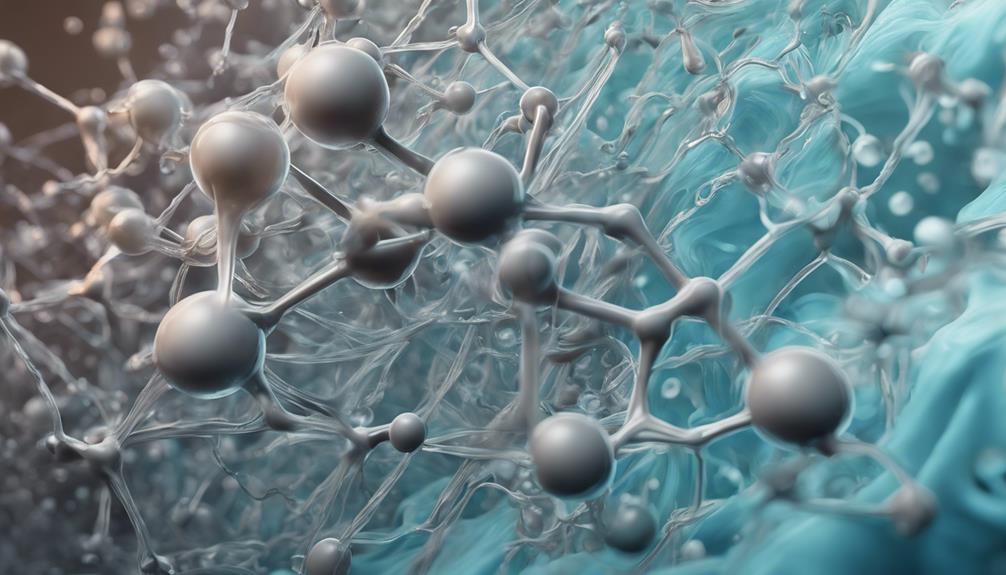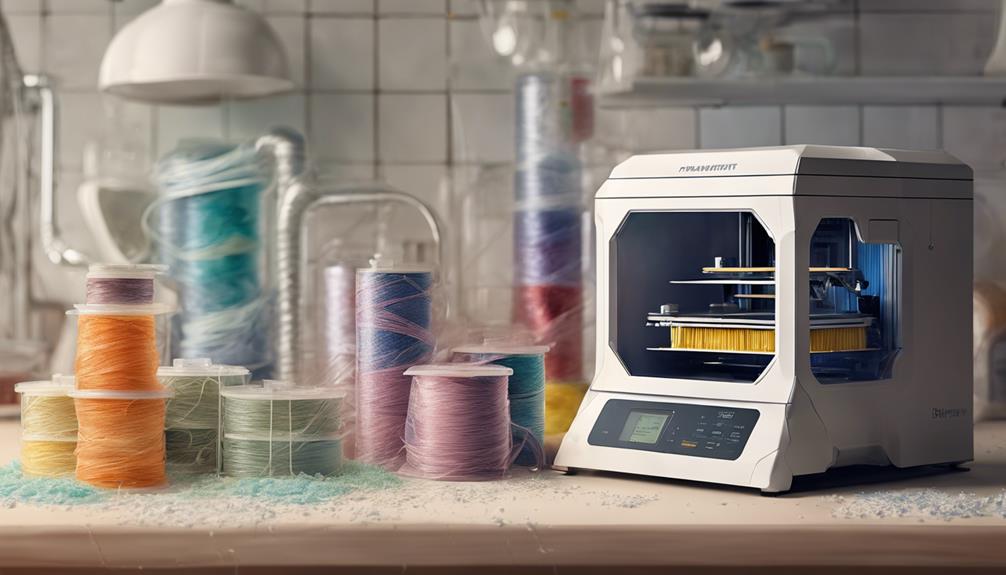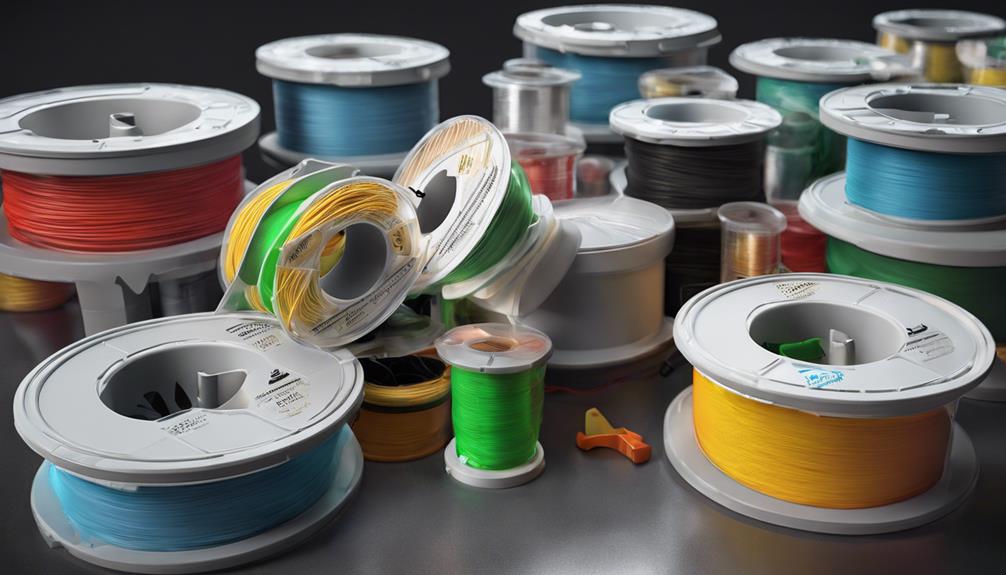Understanding the intricacies of filament hygroscopy is paramount in the domain of 3D printing. Moisture absorption by filaments can greatly impact print quality and performance, necessitating a strategic approach to combat this issue. By exploring the nuances of how different types of filaments interact with moisture and implementing tailored solutions, enthusiasts can elevate their printing prowess to new heights. Stay tuned to uncover the secrets behind mastering filament hygroscopy and revolutionize your 3D printing experience.
Understanding Filament Hygroscopy

Understanding Filament Hygroscopy is essential for 3D printing enthusiasts to grasp the moisture absorption characteristics of different thermoplastic filaments commonly used in Fused Deposition Modeling (FDM) printers.
Filaments like PLA, Nylon, PVA, Polycarbonate, and ABS are hygroscopic, absorbing moisture from the air. This absorption can lead to a range of printing issues such as swelling, extrusion delays, inconsistent print quality, and more. Signs of moisture absorption include brittleness, odd textures, and poor print quality.
Proper storage in vacuum bags or airtight containers with desiccants like silica gel is critical to prevent moisture absorption. Identifying and addressing filament hygroscopy is essential for achieving high-quality 3D prints consistently.
Preventing Moisture Absorption
To maintain peak 3D printing filament quality and performance, effective measures must be implemented to prevent moisture absorption during storage and usage. One key aspect is proper storage in vacuum bags or airtight containers with silica gel to avoid hygroscopic filament issues. Another method is utilizing filament dry boxes with desiccants to maintain low humidity levels. Additionally, investing in filament spool holders with built-in dryers can help prevent moisture absorption during the printing process.
| Prevention Method | Description | Benefits |
|---|---|---|
| Vacuum bags with silica gel | Airtight storage with moisture-absorbing silica gel packets to keep filament dry | Prevents moisture absorption and maintains filament quality |
| Filament dry boxes with desiccants | Containers designed to store filament at low humidity levels with desiccants for moisture control | Maintains optimal filament conditions and prevents swelling |
| Filament spool holders with dryers | Holders equipped with dryer units to dehumidify filament during printing for continuous usage | Prevents moisture-related printing issues and ensures quality |
Effective Filament Drying Techniques

Exploring the most efficient methods for drying filament is important in ensuring excellent 3D printing results. Ovens are commonly used for drying filament, but caution is needed to avoid temperatures near the glass shift temperature. Drying PLA or Nylon spools in an electric oven typically takes 4-8 hours.
While gas ovens can be utilized, they may provide uneven heating, potentially damaging filament spools. A safer alternative is using food dehydrators for drying PLA filament, although it may require additional time.
Proper storage in vacuum bags or airtight containers with silica gel is essential to prevent moisture absorption and maintain the quality of the filament. Effective filament drying techniques play a significant role in achieving successful 3D prints.
Impact of Moisture on Prints
The susceptibility of 3D printed parts to moisture can greatly impact their structural integrity and longevity. Moisture absorption in filaments like PLA, Nylon, and ABS can lead to swelling, extrusion delays, jams, inconsistent print quality, steam traces, stringy filament, increased diameter, bubbles, and uneven layers.
Signs of moisture absorption in prints include brittleness, less flexibility, cracking sounds, steam bubbles, odd textures, blobs, stringing, visible steam, popping sounds when heated, uneven layers, and poor print quality. Immersion in water can degrade prints, with materials like PLA with Silicon Carbide degrading in as little as 58 days.
Proper storage and filament maintenance are essential to combat the detrimental effects of moisture on 3D printed parts.
Maximizing Filament Lifespan

Proper storage and maintenance practices are essential for maximizing the lifespan of 3D printing filaments.
To extend the longevity of filament spools, it is important to store them in airtight containers or vacuum-sealed bags with desiccants like silica gel to prevent moisture absorption. Maintaining a consistent humidity level of 10-13% in the storage environment can greatly prolong the usability of filaments like PLA or ABS.
Regularly checking and drying filaments if needed can restore them to their original printing quality, ensuring that they perform as effectively as new filaments.
Frequently Asked Questions
Can Using a Hairdryer Effectively Dry Out Filament?
Using a hairdryer to dry filament can be effective, but caution is advised to prevent overheating and potential damage to the material. Proper temperature control and monitoring are essential to guarantee successful drying.
How Does Humidity Affect the Printing Speed of Wet Filament?
Does humidity impact printing speed with wet filament? Humidity increases filament moisture, causing swelling, extrusion delays, jams, and poor print quality. Properly dried filament guarantees consistent printing. Understanding these effects is vital for successful 3D printing outcomes.
Is Storing Filament in a Ziploc Bag With Silica Gel Sufficient?
Storing filament in a ziplock bag with silica gel is a good start to prevent moisture absorption, but for best protection, consider vacuum bags or airtight containers. Proper storage is essential to maintain filament quality.
Can Moisture-Absorbed Filament Be Restored to Its Original State?
Restoring moisture-absorbed filament to its original state is possible through proper drying methods like using ovens or food dehydrators. Care should be taken to avoid exposing filament to temperatures near its critical temperature to prevent damage.
What Is the Impact of Reusing Partially Dried Filament on Print Quality?
Using freshly dried filament, while a cost-effective measure, may compromise print quality due to residual moisture effects. Peak results are achieved with newly dried filament to guarantee consistent performance and enhance print quality.
Conclusion
To sum up, mastering filament hygroscopy is crucial for achieving high-quality 3D prints. By understanding the impact of moisture on filaments and implementing effective drying techniques, enthusiasts can prevent issues like swelling and extrusion delays.
Proper storage and maintenance of ideal conditions will guarantee consistent print results and maximize filament lifespan.
Remember, in the world of 3D printing, knowledge and preparation are key to success.